There are two types of cove when it comes to seamless polymer flooring (epoxy, cementitious urethane, etc.): radius cove and cant cove. Both use a polymer/sand combination and are applied by trowel, although one should be applied by a very skilled technician. Here’s a quick overview of how and when to use each:
Radius Cove
The most popular mortar cove is the integral radius cove, which is used to prevent fluids from entrapping beneath the wall or causing mold issues (i.e. waterproofing). This type of cove is typically installed at 4 inches to 6 inches high with a curved radius. This can be completed in a decorative quartz finish or a standard solid color.
Contractors have spent years developing the necessary skills to perfect this type of hand troweled cove base. Some quick application tips include:
- Using the Epoxy 400 Thixotropic will ensure a perfect mix for troweling
- Be sure to finish vertical before troweling the radius
- Use the Epoxy 400 Thixotropic as a grout coat to seal mortar before the topcoat
Cant Cove
Another type of cove is the cant cove. Installed at a 45 -degree angle, this cove is designed to keep wheeled carts, machinery and power-operated equipment from coming in contact with the wall. This can be installed at any height, yet the height and length are usually proportionate and dictated by wheeled cart. This type of cove, which can be done in solid color or quartz, uses a lot of polymer mortar, so it can be expensive.
Some quick application tips include:
- Use the correct size width or length trowel to accomplish the desired height and width
- Thixotropic should be used for an epoxy mortar mix
- Tape lines will ensure a straight cant cove both on the floor and wall
Oftentimes, system specifications don’t detail all aspects of the cove, so be sure to get the necessary information from your contractor or architect before you start the project, including the type, height, radius and diameter of the cove to be installed.



